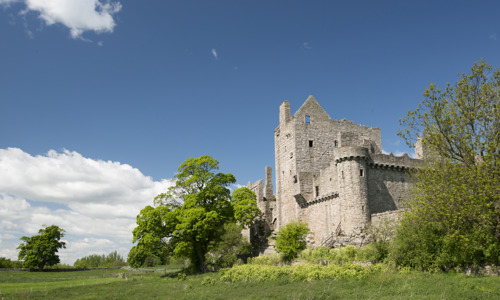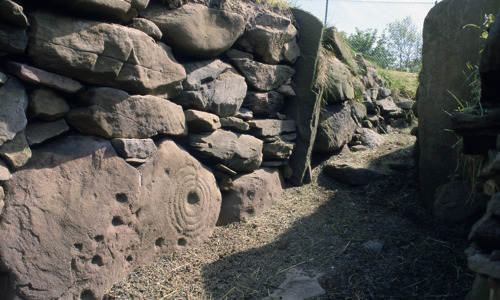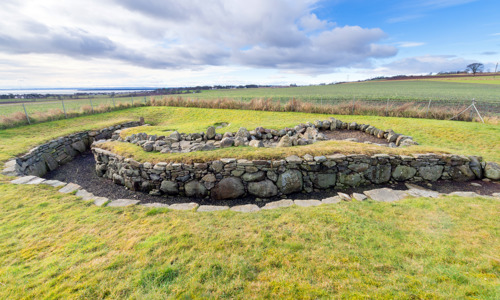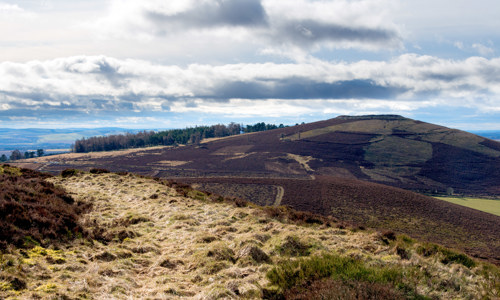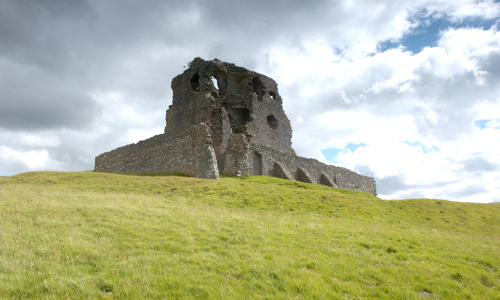History
A mystery in the earth
A major point of interest in a visit to Castlelaw is the underground feature in the middle ditch, known to archaeologists as an earth house or souterrain. In Scotland, these earth houses are found along the eastern seaboard, and quite a few are in Historic Environment Scotland’s care. Those found in Europe are similar to Castlelaw’s, with long, curving stone passages.
The souterrain at Castlelaw earth house is around 20m long. It is sunk into the ditch, which indicates it was probably built in the early centuries of the first millennium AD – towards the end of the hill fort’s existence.
The construction of a stronghold
Castlelaw is impressively fortified, with its three concentric rings of ramparts and ditches around its hill. Archaeological excavations in the 1930s and 40s revealed that occupation of the site began in the 1st millennium BC, when a farming community enclosed their houses within a sturdy timber palisade.
This was later replaced by an earthen rampart and ditch, with a timber gateway controlling access to the fort. Two additional ramparts and ditches were later added, a development typical of Iron Age forts in south-east Scotland.
The Roman connection
Finds from the souterrain at Castlelaw suggest it was in use during the period when Romans were active in southern Scotland, though the fort itself may have been largely abandoned by this time.
Roman finds at Castlelaw all date to the AD 100s, and they include:
- An enamelled bronze brooch
- Glass bottle fragments
- Roman pottery
- A Romano-Celtic mounting
These finds are of some importance in understanding the relationship between the Romans and the locals in Northern Britain. The presence of these items suggest that the local population were either getting gifts from, or trading with, the Romans.







